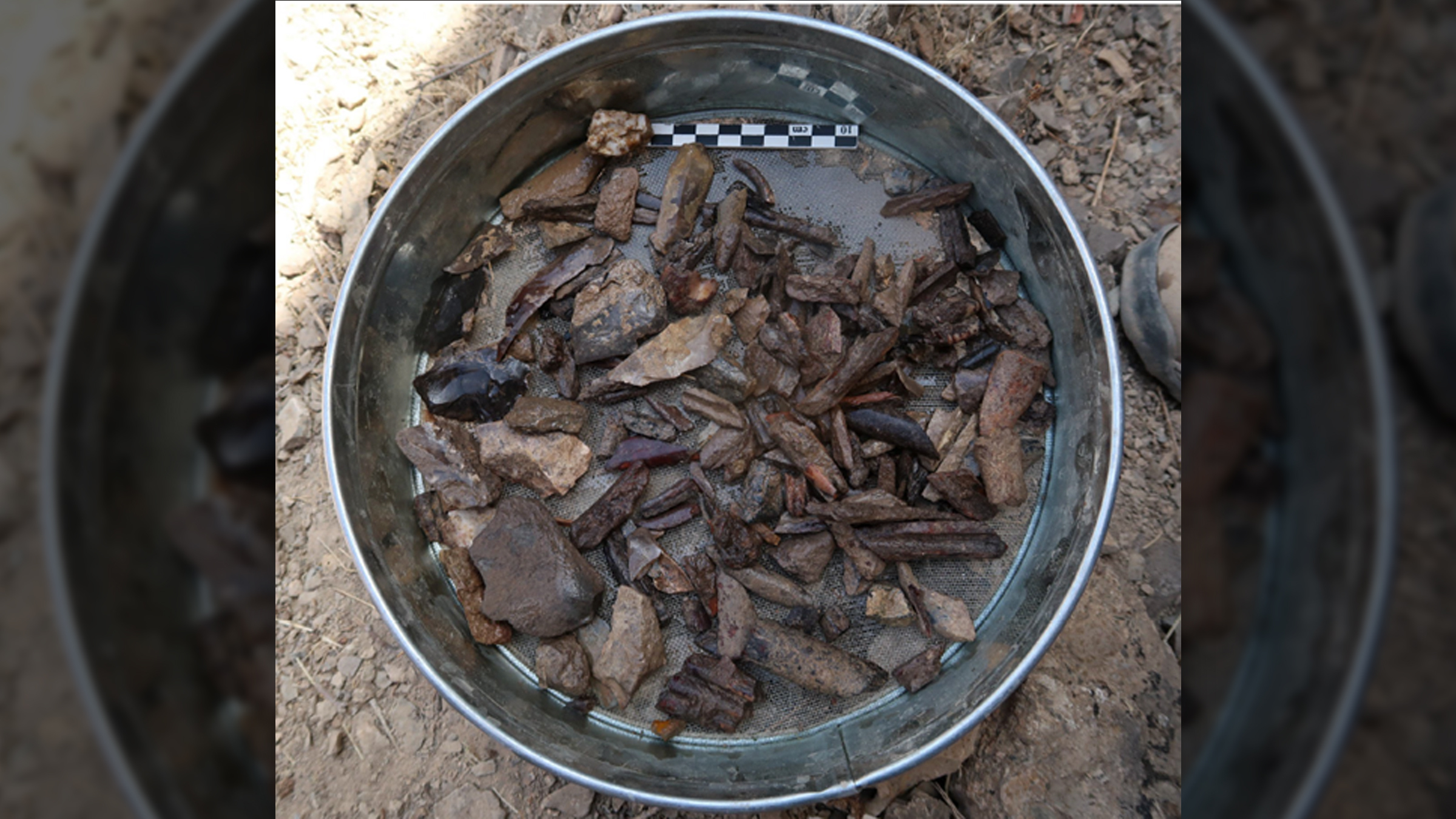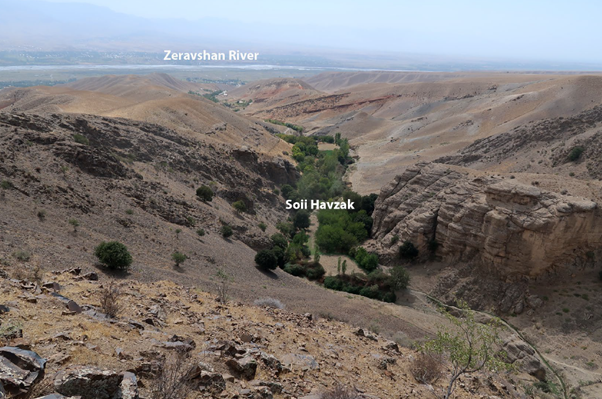
Along a stream in Tajikistan, archaeologists have discovered a rock-shelter that may have been a migration site for Neanderthals, Denisovans and modern humans over a span of 130,000 years.
Archaeologists have long known that modern humans and our close relatives trekked through the so-called Inner Asian Mountain Corridor (IAMC) of Central Asia during the Stone Age. Over the years, researchers have investigated the remains of Neanderthals and evidence of Denisovans and modern humans in this region, "making the IAMC a location where the three human metapopulations could have met and interacted," researchers wrote in a new study, published Nov. 4 in the journal Antiquity.
However, this "this region is still relatively under explored," they added.
"This region may have served as a migration route for several human species, such as modern Homo sapiens, Neanderthals, or Denisovans, which may have coexisted in this area," study first author Yossi Zaidner, a senior lecturer at the Institute of Archaeology at the Hebrew University of Jerusalem, said in a statement. "Our research aims to uncover who were the humans that inhabited these parts of the Central Asia and the nature of their interactions."
To investigate, Zaidner and colleagues looked for Stone Age sites along the Zeravshan River, a major river in Central Asia. They ended up unearthing two Stone Age sites with multiple layers, indicating that different humans had occupied these spots at different times.
Related: Why did Homo sapiens outlast all other human species?
In 2023, the team excavated one of these sites, named Soii Havzak, which is situated along a small tributary of the Zeravshan River. They dug three trenches there, revealing a diverse array of stone tools; including crafted flints, blades and rock flakes; animal bones; and charcoal and burnt flints that pointed to ancient fire use that date to between 150,000 and 20,000 years ago.

"We hope that ongoing research at this site will reveal new insights into how different human groups — like modern humans, Neanderthals and Denisovans — may have interacted in this region," Zaidner said. "This discovery is a significant step toward understanding ancient human history in Central Asia."
Ancient humans weren't the only individuals who enjoyed this region. The river valley would eventually become a major route on the Silk Road, connecting civilizations like China and the Roman Empire across continents, according to the statement.
There is still much to be learned about the interactions between different human species during the Middle Paleolithic, which lasted from about 300,000 to 30,000 years ago. This archaeological site presents a unique opportunity to investigate how modern humans and their close relatives may have interacted. The landscape of the Zeravshan Valley may have served as a significant migration area for human populations, including the spread of early Homo sapiens from Africa into Asia during this time, according to the statement.







